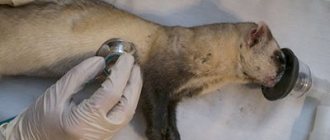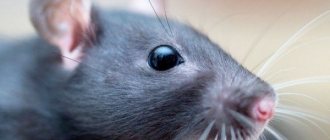Among all pets, hamsters are considered the most common, and the most popular of them is the golden Syrian. It is noteworthy that rodents of this species cannot be found in the wild.
Let's find out how long Syrian hamsters live in captivity and look at the main aspects that affect the pet's life expectancy.
How long does a Syrian hamster live at home?
Unlike other members of the family, Syrian hamsters are considered long-lived. While the lifespan of dwarf and Djungarian hamsters at home is 2-3 years, Syrian hamsters live 3-4 years , and with proper care and care they can reach 5 years of age. History records a case where a rodent lived in captivity for 7 years.
The longevity of a rodent depends on a properly selected diet and compliance with the rules of hygiene and care in general. Life expectancy is also affected by injuries received, illnesses suffered and the level of activity of the pet.
Important! At the age of 2.5-3 years, a hamster is considered an adult and suffers from diseases, therefore, in order to extend the longevity of the pet, it is necessary to provide it with proper care and regularly show the animal to a veterinarian.
You need to clean the house at least 1-2 times a week
Types and colors.
The true color of the Syrian hamster is red, more like a mahogany shade. It was this kind of inhabitant that was first discovered in Syria and brought to Europe. Its peculiarity: gray ears and black eyes. With age, the color of the animal changes, the undercoats become grayer, but the golden hue of the top remains the same. There are other colors of the animal:
- The black by deep charcoal hair color, white paws and chin. It appeared in France in the process of mutation.
- The white animal has red eyes and gray ears.
- The color “ivory” is very similar to white, but has a distinctive feature. A milk hamster can have either black or red eyes.
- The gray animal has dark gray ears, stripes on its cheeks, and a gray spot on its chest. The coat itself is light in color with dark tips. The undercoat is blue.
As a result of mixing, other shades were obtained:
- Honey
- Smoky
- Blue mink
- Yellow
- Cream
- Chocolate
- Brown
- Beige
Syrian Hamster Yellow
Syrian Hamster Brown
Syrian Hamster Beige
Syrian hamster Cream
Syrian hamster Blue mink
Syrian hamster Honey
Syrian Hamster Smoky
Hamster can be spotted. Currently, the Angora breed has been bred to have long fluffy hair.
What determines the lifespan of a Syrian hamster?
First of all, from a properly equipped home, in which the pet can not only rest and eat, but also spend time actively. You can choose a cage with a deep tray and metal rods, or pay attention to specialized aquariums in which the hamster will feel no less comfortable.
Important! The cage must be 40x30 or larger. It is advisable to purchase a wheel, swings, tunnels and other toys. Some products can be made independently from scrap materials.
Care
Cleaning the cage plays an important role in a baby's life. The house must be cleaned regularly, at least 1-2 times a week. It is advisable to change the filler every day. In neglected bedding, microbes and bacteria appear that can affect the well-being and health of the rodent. Once a month you need to wash all accessories in the house in a solution of chlorine diluted in water.
There is no need to bathe the hamster; he copes with the cleansing procedure on his own. However, if your baby has thick fur, place a bowl with special sand in his cage , in which his furry-legged friend can thoroughly clean it. It is best to brush Syrian hamsters with a small comb or a toothbrush with soft bristles.
Important! A homa's cage should always have a drinking bowl with clean, filtered water. Despite the fact that hamsters drink little liquid, the container must be changed daily. The drinking bowl and feeder must be rinsed with boiling water at least once a week to get rid of harmful bacteria.
Syrians should not be given dairy products
Nutrition
Nutrition plays a key role in the life of a rodent, so for good health, your pet must consume sufficient amounts of vitamins and nutrients daily . Make sure your hamster does not eat the following foods as they can cause bloating, food poisoning and diarrhea. Failure to provide timely assistance can even lead to death.
- sugar, salt, ground pepper;
- dairy products, as well as products containing high levels of fat;
- nuts and chocolate;
- citruses and fresh cabbage;
- alcoholic drinks and sweet carbonated water.
Instead, add nutritional ingredients to the feed mixtures:
- fruits: apples, bananas, pears, radishes, persimmons, any dried fruits;
- cereals and seeds (except sunflower seeds, as they contain fatty acids);
- grass: parsley, wheat and clover, which pets really like;
- Syrian hamsters love flour, so sometimes you can pamper your pet with white bread, pasta or steamed porridge.
Important! A Syrian hamster should always have a mineral stone hanging in its cage that contains calcium. The pet is not only saturated with the necessary elements, but also grinds its teeth on it. If you do not purchase this accessory as an adult, the rodent may suffer from oral diseases.
Have you given your hamster nuts?
Genes
Before buying a Syrian hamster, you need to familiarize yourself with information about its parents, ask whether the rodent has a predisposition to any disease and what its ancestors were. If they lived a long life, then your pet will probably have a long life.
Don't self-medicate!
Diseases
Unfortunately, hamsters are often susceptible to a variety of illnesses, ranging from the common cold to serious cardiovascular or musculoskeletal problems.
It is quite simple to recognize a disease in a pet: it begins to behave unnaturally, moves little, spends most of its time in the house , begins to eat less or refuses food altogether, its fur becomes dull and loses its former elasticity. As soon as you notice any of these symptoms, contact a veterinarian who specializes in treating small rodents. Do not self-medicate under any circumstances!
The most common problem that occurs in representatives of this breed is obesity, so breeders are strongly recommended to purchase a running wheel . If you prefer to let your baby go for a walk around the apartment, be careful that he does not harm himself while playing and running. A walking wheel can be a good help.
The ideal room temperature for a rodent is 18-20 degrees
Reproduction.
It is better to mate a female at the age of four months, and a male at three months. The fetus is gestated for only eighteen days. Before birth, the cage must be thoroughly disinfected and cleaned. Either four or fifteen cubs can be born. They feed on mother's milk. After 28 days, they begin to get accustomed to adult food. Touching the offspring is prohibited. If the female smells a foreign odor, she will simply eat the young. A young mother needs to be fed more cottage cheese, yolk, and boiled chicken. You should not disturb the animal until the children grow up.
How to extend the life of a hamster: basic rules
To extend the life of a Syrian hamster, you must follow basic maintenance rules:
- Position the cage in such a way as to avoid drafts and areas with constant temperature changes. But do not place the cage close to heating devices. Changes in temperature can cause illness in the baby. The ideal temperature for a rodent is 18-20 degrees;
- Try not to move your pet's house around the apartment . Avoid frequent long journeys. A change in even the slightest environment causes stress in the Syrian hamster;
- Despite the fact that hamsters get along with other animals, it is better to get Syrians when there are no cats or dogs in the house. Noisy neighbors will certainly cause danger and fear in the baby;
- Make sure your hamsters always have food and access to water. Regularly scald dishes to get rid of bacteria;
- Do not leave the cage near luminous objects or in the open sun , as Syrian hamsters do not tolerate bright light.
Buy 4 week old males
Taking care of your health
Has good immunity. Diseases arise mainly due to improper care. Small and old individuals are most susceptible to diseases. Most people get sick due to stress.
Major diseases
The most common diseases:
- cold;
- clogged or damaged cheek pouches;
- diarrhea;
- conjunctivitis;
- skin diseases.
The following symptoms should alert the owner:
- lethargy;
- manifestations of aggression;
- formation of wounds on the skin;
- photophobia;
- hard breath;
- hair loss.
With timely consultation with a doctor, most diseases can be cured.
Prevention
Timely treatment of the cage and bedding, a balanced diet, absence of drafts and stressful situations.
At what age is it better to buy Syrian hamsters?
Of course, like any other pet, it is better to purchase a Syrian hamster during its teenage years.
- Too old individuals will not please you for a long time;
- Pets that are too small may not survive early separation from their mother and adaptation to a new unfamiliar environment.
- Buy males that have reached 4 weeks of age. When choosing a female, keep in mind that at 6 weeks of life, puberty has already begun, so if all the hamsters lived in the same cage, the female may be pregnant.
The breed has an unusual character: rodents remember insults and do not forgive when they raise their voices; in case of hostility, they can behave aggressively and bite the owner. To avoid negative consequences, it is necessary to accustom the hamster to the necessary commands from the first days and regularly contact him. Syrians value affection and love to sit in their owner's arms.
Syrian hamster - care and maintenance - video
Features and lifestyle
Among its relatives, the Syrian hamster is the largest, its length reaches 18 cm. Females are larger in size than males and can grow 20 cm long. Distinctive features of the animal:
- rounded ears;
- stocky body;
- small paws;
- round muzzle;
- There are four toes on the front paws and five on the hind paws.
Syrian hamsters also live in the wild and are not picky about where they live. They can be found in Asia, Africa and America. The most favorable place for an animal to live is in crop fields, where there is a lot of food. The animals live in shallow burrows. They lead an active lifestyle at night.
The only type of hamster that can be trained to a nickname. He has a well-developed intellect and friendly habits. A seemingly cute animal can be aggressive! It is common for rodents to bite. Why does he do this?
- Knows the world . If you pick up a hamster for the first time, he will definitely bite. This is how a Syrian gets to know you. Nature endowed him with hearing and smell poorly, but his tactile sense is well developed. To get to know something better, he will definitely taste it.
- Feels food . Let's say you've eaten and picked up the animal. The smell of your food is new to him, and he definitely tastes it.
- You are not lifting the hamster correctly. You need to take the animal with your hands from the side or from below. If you grab him from above he will get scared.
- Loud sounds. When you have a hamster in your hands, do not speak loudly, act calmly, he will feel it and will be kind.
- Sharpenes his teeth. If there is a lack of mineral stone or dry branches, which the animal needs to grind down its teeth, it will bite.
What to do if your pet dies
The death of a beloved pet is always a sad but inevitable event. When the time has come to say goodbye to the animal forever, you need to decide how to bury it. You can use cremation services, which are provided by most veterinary clinics. You can also find out where the pet cemetery is and make a grave for your pet there. Another option for burying a hamster is in the forest. It is important to know that, according to sanitary and epidemiological standards, it is prohibited to bury animals in city parks, flower beds, and courtyards.
It doesn’t matter what breed the pet is – some people like Djungarian hamsters, while others like Syrian or Siberian hamsters. The main thing is to give your little friend love, care, attention, and then the animal’s life will be as long and bright as possible.











